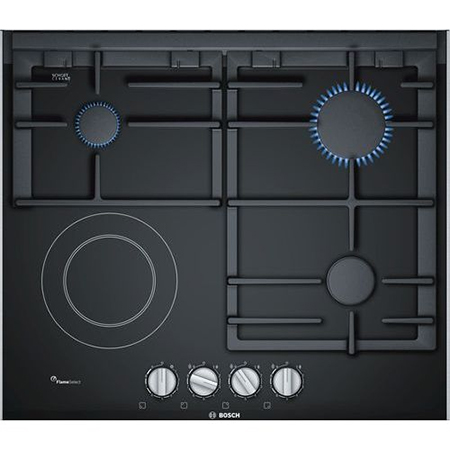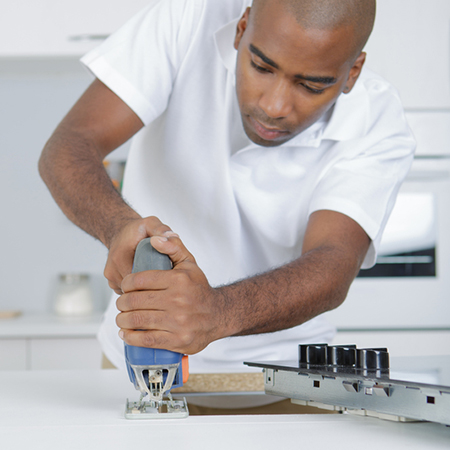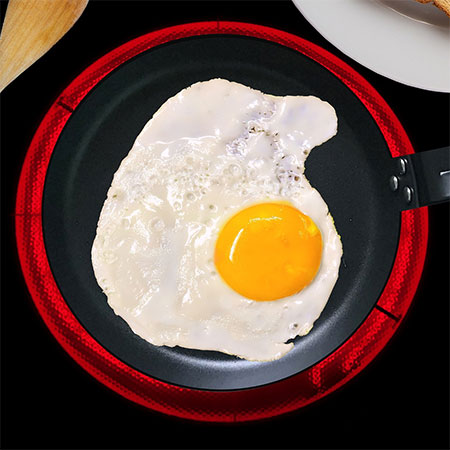Which is Better, Gas or Electric Hob?
When it comes to a gas or electric hobs and which is better, I'm kinda on the fence since both have pros and cons.
11/09/2021
The Bosch Series 8 Combination Ceramic Gas Hob
When it comes to kitting out a kitchen with all the latest modern conveniences, one decision that seems to pop up these days is whether to go for a gas or electric hob. My kitchen is fitted with both, the electric hob that I use every day and a small gas hob that I use when we have load shedding. But if you are making a comparison between the two, it's helpful to know the pros and cons for each.
Benefits of Fitting an Electric Hob
Unless you are in a suburb that has access to municipal gas, chances are you are living in a home that has an electric hob fitted in the kitchen. But as Bob Dylan said in his song, "Times they are a-changin'" and now people are looking at all the options. As with many appliances, there are pros and cons for different models, and this is especially so when comparing gas to electric hobs. We compiled a list of pros and cons for fitting an electric hob in your kitchen:
Electric Hob - Pros:
• Wide range of designs and models that you can choose from.
• Baked enamel, stainless steel or ceramic glass finish offers easy cleaning.
• Easy heat control via knobs fitted either on the hob or the oven.
• Many have a child-friendly design that shows that heating plates are still hot to touch.
Electric Hob - Cons:
• Not reliable if we are looking at increased power outages in the coming years.
• Heating plates take a long time to heat up.
• Spills need to be cleaned up immediately and especially on ceramic hobs.
• A flat ceramic hob is more prone to scratches.
Electric hobs are easy to install as a DIY project, although you require an electrician do the necessary wiring.
Good to Know:
The above pros and cons do not include details for Induction Hobs, which have a much faster heat-up time than conventional electric hobs and the process is, therefore, more economical as far as energy savings are concerned. The only downside of having an Induction Hob installed is the need to purchase pots and pans that are induction ready.
An induction hob is considered an energy-saving alternative to a conventional hob. Cooking time is faster and there is less loss of heat than element-type heating plates.
Benefits of Fitting a Gas Hob
A gas hob is becoming a sensible option for many homeowners, especially in light of increased power outages that have been occurring lately, and that will probably not let up for quite a long time. But more than that, gas has always been a popular choice for homeowners in other countries, and those locally that use gas appliances state that they would never go back to an electric hob. Let's take a look at the pros and cons of fitting a gas hob in the kitchen:
Gas Hob - Pros:
• Gas is generally cheaper than electricity.
• The ability to instantly control heat.
• Immediate heat on demand.
• Considered to be unsafe if there are young children in the home.
Gas Hob - Cons:
• Gas is sometimes in short supply, particularly during the colder times of the year.
• Installation of gas appliances can be expensive.
• Unless you purchase a newer model (at a higher cost), gas hobs look outdated.
• If the model has an electric igniter, consider your options when the power goes out.
Good to Know:
Newer models of gas hobs are more streamlined and easier to keep clean. There are also models available now that incorporate both gas and electric heating plates, allowing you to use both. This is extremely handy when the power goes off and you need to cook family meals.
If you are in the market to purchase a gas hob, try to choose one that is easy to wipe down and does not have to be stripped down for regular cleaning.







